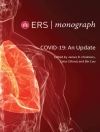This text aids medical students and trainee doctors in developing their knowledge of the conditions covered and improving their ability to clinically assess patients and formulate a management plan. Once doctors are comfortable in interpreting these graphs, they can use them in consultations with patients about their kidney condition and so support self-management by patients, an increasingly important aspect of healthcare. Kidney diseases and the speciality of nephrology have traditionally been regarded as difficult to understand. This is compounded by the use of complex definitions and terminology. These complex definitions result from a need to categorise kidney diseases according to the way kidney function changes over time, and then to express this in numbers and words. Central to the assessment of patients is the measurement of kidney function. In our teaching of medical students and trainee doctors, as well as in our clinical practice and interaction with GPs and consultantcolleagues, we have found that viewing graphs of patients’ kidney function (estimated glomerular filtration rate, or e GFR) against time is a much easier way of understanding kidney diseases. It provides the patient’s ‘kidney history’ and leads into a description of the natural history and management of their condition. We were surprised to find that this graphical approach is not used routinely in teaching or in daily clinical practice. We therefore believe there is a need for a book that uses this approach and we thus sought to compile a collection of illustrative case studies covering an array of disease categories, together with patients’ e GFR readings.
Cuprins
Introduction.- The purpose of the book – understanding the natural history of kidney disease.- how displaying a GFR history is a fundamental part of the clinical assessment of kidney diseases.- how the e GFR graph is used to inform patients and plan treatment.-principles but not details of treatment.- The basics of creatinine measurement and e GFR equations in adults.- Simple guide to the classification of AKI, AKD and CKD.- Stages of CKD – including proteinuria.- The meaning of ‘stability’ in an e GFR graph – variation over time.- Cases.- Section 1: Acute kidney injury – changes over 50% drop, assuming no asymmetry).- Recurrent AKI leading to CKD.- Section 2: AKD – changes >48 hours 3months.- Patterns of progression – Linear and Non-linear.- Monitoring response to treatment – e.g. immunosuppression for GN, BP control in malignant hypertension.- Section 4: CKD – changes over years.- non-progressive (stable) CKD – e.g. obstructive uropathy.- progressive CKD – e.g. transplant nephropathy, lithium nephrotoxicity, role of proteinuria as risk marker.- Use of graphs to plan future renal replacement therapy – e.g. linear progression in ADPKD.- Section 5: Acute-on-chronic kidney disease.- Chronic slowly progressive diabetic nephropathy with superimposed acute pathology, e.g. response to ACEI/ARB, contrast nephropathy, glomerulonephritis, interstitial nephritis.- Transplant rejection.- Pregnancy in women with CKD.- Section 6: Nephrotic syndrome.- GFR, serum albumin and urinary PCR graphs – use to monitor treatment and relapses, and to plan treatment.- Section 7: Other graphs.- 24 hour BP measurement – importance of nocturnal dip and timing of antihypertensives in CKD care.- Diabetes mellitus – Hb A1c – colour coding as patient education tool; role of glucose control in preventing diabetic nephropathy (but no impact once CKD established).- Serum free light chains and myeloma kidney/light chain nephropathy/immune GN.- Conclusions.- e GFR graphs – an essential tool in patient assessment which tells the story of kidney disease.- The role of graphs (e GFR, 24 hour BP, and Hb A1c) in patient education and support of self-management.- Role of e GFR graphs in systematic CKD surveillance by renal units and pathology labs – evidence of benefit.
Despre autor
Dr Hugh Rayner gained a first class degree in physiology at Cambridge University before qualifying with honours at the London Hospital Medical College in 1981. He was awarded an MD from the University of Leicester for studies on experimental models of kidney disease. After a number of training posts, including a year as clinical fellow in Melbourne Australia, he was appointed as a consultant in renal and general medicine in Birmingham in 1993.
As part of his studies for the Diploma in Medical Education from Dundee University in 1996, he presented a dissertation on the interpretation of serum creatinine and published a consensus curriculum for undergraduate renal medicine [1]. He is a full time nephrologist, clinical lead for the West Midlands Renal Network, and continues to teach renal medicine to undergraduates and trainee doctors.
Dr Mark Thomas studied Biological Sciences and Medicine as an undergraduate at Kings College London and Westminster Medical School. After postgraduate training he was a Research Fellow at Washington University Medical School in St Louis, USA for three years, studying models of proteinuric renal disease. This interest continued during Senior Registrar training in Leicester. He has been a Consultant Nephrologist and Physician at the Heart of England Foundation Trust in Birmingham since 1998.
He has had a clinical research interest in acute kidney injury (AKI) for some years, including earlier detection and intervention in AKI. He is chief investigator for the Acute Kidney Outreach to Reduce Deterioration and Death (AKORDD) study, a large pilot study of AKI outreach. He has chaired clinical guideline development groups for AKI and anaemia management in CKD for the UK National Institute for Health and Care Excellence (NICE).
Dr David Milford commenced basic paediatric training in 1983 and higher paediatric training at Sheffield Children’s Hospital in 1986. He undertook research in the Department of Nephrology, Birmingham Children’s Hospital into the epidemiology of diarrhea-associated haemolytic uraemic syndrome resulting in several major publications and a thesis for Doctor of Medicine. He was appointed consultant nephrologist at Birmingham Children’s Hospital in 1992. His interests include hypertension, acute kidney injury and renal transplantation.












